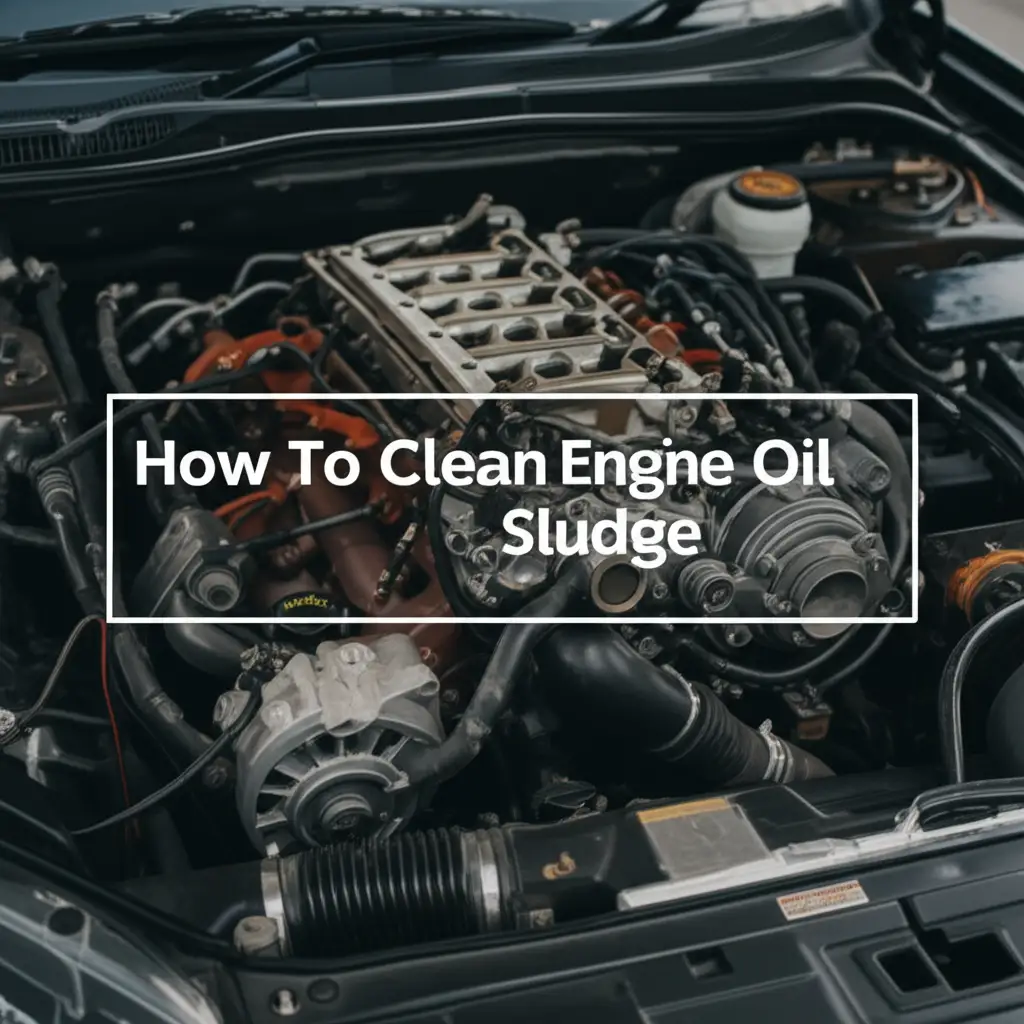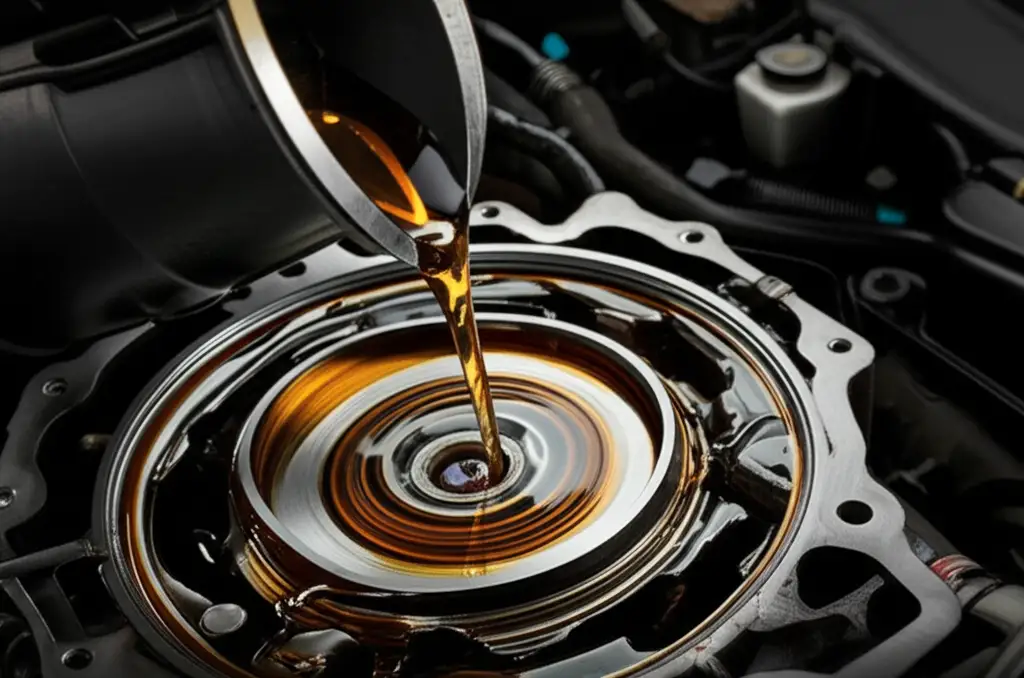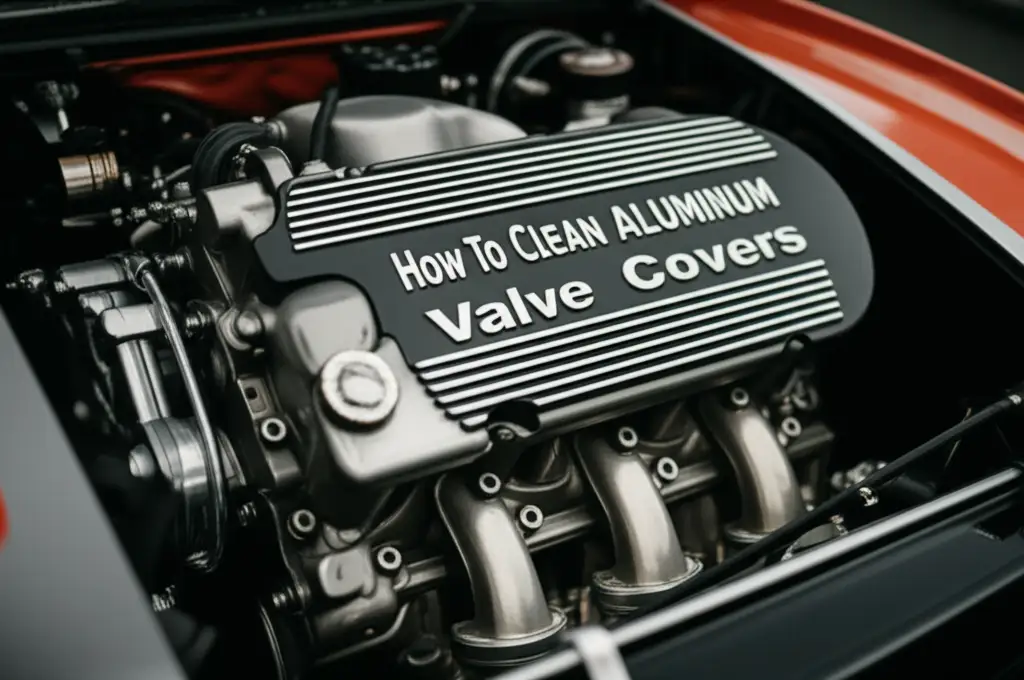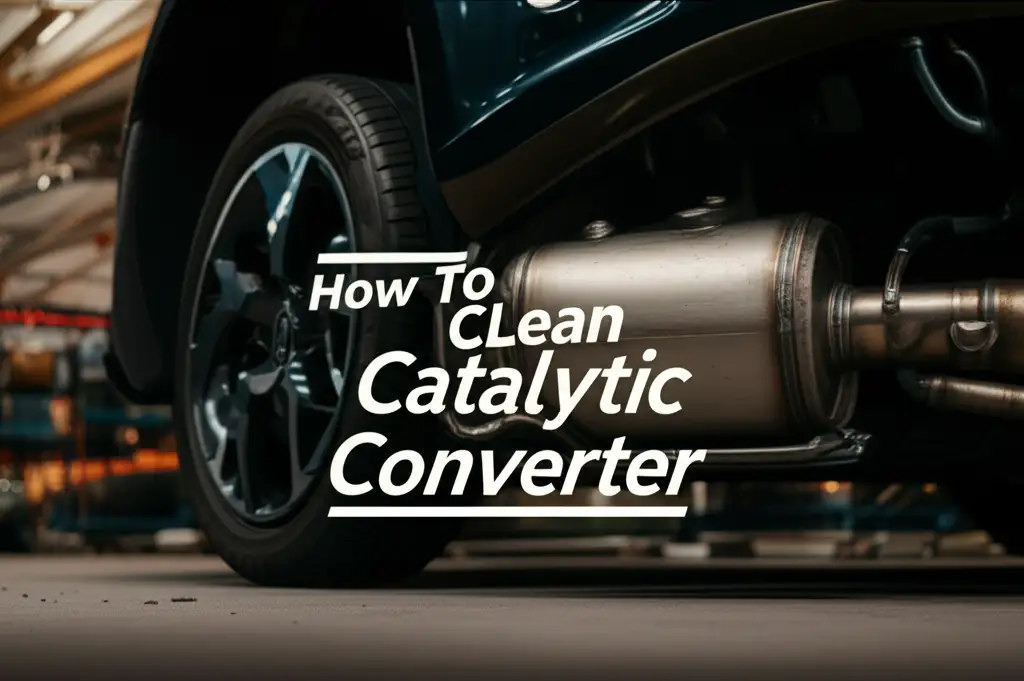· Automotive Maintenance · 16 min read
How To Clean Engine Oil Sludge

Clean Engine Oil Sludge: Your Complete Guide
Engine oil sludge is a thick, tar-like substance. It forms inside your car’s engine. This sludge happens when engine oil breaks down and mixes with contaminants. If you do not remove engine oil sludge, it causes serious harm. It blocks oil passages, stops proper lubrication, and can damage engine parts. I know it can feel daunting to tackle engine issues. But cleaning engine oil sludge is a vital step for your car’s health. This article will show you how to clean engine oil sludge. We will cover everything from understanding what sludge is to effective cleaning methods and prevention tips. By following these steps, you will help your engine run smoothly and last longer.
Takeaway:
- Engine oil sludge harms your engine by blocking oil flow.
- Use engine flush products for general sludge removal.
- Perform regular oil changes with quality oil to prevent sludge.
- Address severe sludge with professional help if necessary.
Cleaning engine oil sludge involves using a chemical engine flush to dissolve the deposits, followed by a complete oil and filter change. For severe cases, manual cleaning of engine components like the oil pan and valve covers may be necessary to restore proper lubrication and prevent engine damage.
Understanding Engine Oil Sludge: The Silent Threat
Engine oil sludge is a major problem for car owners. This sticky, thick residue builds up inside your engine. It looks like dark, sticky tar. Sludge forms when engine oil breaks down from heat and oxidation. It also mixes with combustion byproducts like carbon, moisture, and unburnt fuel. This creates a solid mass that does not flow well.
Sludge can block critical oil passages. These passages carry oil to various engine parts. When oil cannot reach these parts, they wear out quickly. Your engine needs clean oil to lubricate, cool, and clean its internal components. Sludge prevents oil from doing its job.
Common Causes of Sludge Buildup
Several factors lead to engine oil sludge formation. Short trips are a big cause. If you drive short distances, your engine does not reach full operating temperature. This keeps moisture and unburnt fuel inside the oil. Over time, these mix and form sludge.
Infrequent oil changes also contribute. Engine oil loses its effectiveness over time. It collects contaminants. Changing your oil regularly removes these harmful particles. Using incorrect or low-quality engine oil also speeds up sludge formation. Always use the oil type recommended by your car manufacturer. Learn how to clean sludge from engine here.
Signs Your Engine Has Sludge
Your car will show signs if it has engine oil sludge. A common sign is decreased engine performance. You might notice your car feels sluggish. The engine might make more noise than usual.
Another sign is an illuminated check engine light. This light can come on for many reasons. If it relates to oil pressure or engine misfires, sludge could be the cause. High oil consumption is also a red flag. Sludge can clog oil return passages, causing oil to burn off. Finally, if you check your oil dipstick and see thick, black, or chunky oil, you likely have sludge. This is a clear indicator that you need to clean engine oil sludge soon.
Essential Tools and Materials for Sludge Removal
Cleaning engine oil sludge requires specific tools and materials. Having everything ready before you start saves time and effort. It also ensures the process goes smoothly. I always make a checklist to avoid missing anything important.
First, you need an engine flush product. These products are chemicals designed to dissolve sludge. Choose a reputable brand for this. Do not use harsh solvents not designed for engines.
You will also need new engine oil. Make sure it is the correct type and viscosity for your car. Check your owner’s manual for this information. A new oil filter is crucial as well. The old filter will contain sludge.
Gathering Your Supplies
Here is a list of what you will need:
- Engine Flush Product: Select a high-quality, reputable brand. These products are formulated to break down sludge safely. Using the right one protects your engine.
- New Engine Oil: Purchase the exact type and amount recommended by your vehicle’s manufacturer. This information is in your owner’s manual.
- New Oil Filter: A fresh oil filter is essential. The old one will be full of contaminants and sludge particles. Replacing it ensures clean oil circulates.
- Oil Filter Wrench: This tool helps you remove the old oil filter. They come in various sizes, so make sure you have the right one for your car.
- Drain Pan: You need a large pan to collect the old engine oil. Ensure it has enough capacity for all the oil.
- Funnel: A funnel helps pour new oil into the engine without spills. This keeps your engine bay clean.
- Socket Wrench Set: You will need this for the oil drain plug. Make sure you have the correct size socket.
- Jack and Jack Stands or Car Ramps: These tools lift your car safely. This provides access to the oil drain plug and filter. Never work under a car supported only by a jack.
- Safety Glasses and Gloves: Protect your eyes from splashes and your hands from chemicals and hot oil. Safety is always first.
- Rags or Shop Towels: For cleaning up any spills. Engine oil can be messy.
Having these items on hand makes the sludge removal process much easier. It also ensures you can complete the job safely and effectively. Proper preparation is key to a successful engine cleaning.
Step-by-Step Guide: Using Engine Flush
Using an engine flush is often the first step to clean engine oil sludge. This method helps dissolve softer sludge deposits throughout the engine. It is a chemical treatment that you add to your existing engine oil. I find this method effective for routine maintenance and moderate sludge issues. Always follow the product instructions carefully.
Pre-Flush Preparations
Before adding the engine flush, prepare your vehicle. First, ensure your engine is at operating temperature. A warm engine helps the flush product work better. It allows the oil to flow more freely. Drive your car for about 10-15 minutes. This warms up the oil.
Next, park your car on a level surface. Engage the parking brake. Open the hood. Locate your engine’s oil fill cap. This is where you will add the flush. Make sure you have your drain pan ready. It should be positioned under the oil drain plug.
The Flushing Process
Once the engine is warm, turn it off. Carefully open the oil fill cap. Pour the entire bottle of engine flush into the oil fill opening. Do not overfill your engine. The flush product displaces some oil.
Replace the oil fill cap tightly. Start your engine. Let it idle for the time specified on the flush product’s instructions. This usually ranges from 10 to 20 minutes. Do not rev the engine or drive the car during this time. The flush needs to circulate through the engine at idle speed. This allows it to break down sludge and deposits. The engine flush mixes with the oil. It helps loosen and dissolve the grime.
After the specified idling time, turn off the engine. Let it cool for a few minutes. This allows the oil to drain back into the oil pan. Now, your engine is ready for an oil change. The flush has done its job. It has prepared the sludge for removal with the old oil. This step is critical to clean engine oil sludge properly.
The Oil Change: Completing the Sludge Removal
After using the engine flush, a full oil change is essential. This step removes the dissolved sludge and old oil from your engine. It ensures new, clean oil can lubricate your engine properly. I cannot stress enough how important this part is. Skipping it defeats the purpose of flushing.
Draining the Old Oil
Start by safely lifting your car using a jack and jack stands or drive it onto car ramps. Ensure the car is stable. Place your drain pan directly under the oil drain plug. The drain plug is usually at the bottom of the oil pan.
Using a socket wrench, loosen and remove the oil drain plug. Be careful, as the oil might still be warm. Let all the old oil drain completely into the pan. This can take 10-15 minutes. The oil will likely look very dark and thin. It contains all the dissolved sludge. While the oil drains, inspect the drain plug gasket. Replace it if it looks worn or cracked. This prevents leaks.
Replacing the Oil Filter
Once the oil has finished draining, locate the oil filter. It is often near the oil pan or on the side of the engine block. Place a small pan or rags underneath it, as some oil will spill. Use an oil filter wrench to loosen the old filter. Unscrew it by hand once it is loose enough.
Before installing the new oil filter, apply a thin layer of new engine oil to its rubber gasket. This ensures a good seal. Screw the new filter on by hand until it is snug. Then, use the oil filter wrench to tighten it an additional quarter to half turn. Do not overtighten it. Over-tightening can damage the filter or its housing.
Adding New Oil
Reinstall the oil drain plug with a new gasket if needed. Tighten it securely. Lower your car. Open the oil fill cap on your engine. Place a funnel in the opening. Slowly pour the new engine oil into the engine. Add the amount specified in your car’s owner’s manual.
Once you have added all the oil, replace the oil fill cap. Start your engine and let it run for a few minutes. This allows the new oil to circulate. Check for any leaks around the oil drain plug and the new oil filter. Turn off the engine. Wait a few minutes for the oil to settle. Finally, check the oil level with the dipstick. Add more oil if needed until it reaches the “full” mark. You have now completed the process to clean engine oil sludge from your engine. For further engine maintenance, you might consider how to clean carbon buildup in engine.
Manual Cleaning Methods for Stubborn Sludge
Sometimes, an engine flush alone is not enough to clean engine oil sludge. This happens if the sludge buildup is very severe or has hardened. In such cases, you might need to perform some manual cleaning of specific engine components. This involves more advanced mechanical work. Only attempt this if you are comfortable with disassembling parts of your engine.
Manual cleaning focuses on areas where sludge tends to accumulate heavily. These include the valve covers and the oil pan. These components are usually accessible and hold significant amounts of sludge. You can remove these parts from the engine. Then you can clean them by hand.
Cleaning Valve Covers
Valve covers sit on top of the engine, covering the valvetrain. Sludge often forms here, especially around the oil baffles. To clean them, you need to remove the valve covers. This involves disconnecting hoses, wires, and then unbolting the covers.
Once removed, use a plastic scraper or a stiff brush to gently remove the thick sludge. You can also use a strong degreaser or engine cleaner. Spray the cleaner on the sludge and let it soak. Then, scrub it away. Be careful not to scratch the aluminum or plastic surfaces. Ensure all residue is gone. Clean any oil passages within the covers. Replace the valve cover gaskets when reinstalling. This prevents oil leaks.
Cleaning the Oil Pan
The oil pan is at the very bottom of the engine. It collects all the oil. Sludge can settle here, forming a thick layer at the bottom. To clean the oil pan, you must drain the oil first. Then, unbolt the oil pan from the engine block. This can be tricky, as other components might block access.
Once the oil pan is off, scrape out the hardened sludge using a plastic or metal scraper. Be gentle to avoid damaging the pan. Use a degreaser to clean the remaining residue. Pay attention to the oil pickup tube screen inside the pan. This screen can get clogged with sludge. Clean it thoroughly. A clogged screen restricts oil flow to the engine. This causes major damage. After cleaning, replace the oil pan gasket. Reinstall the oil pan carefully. Fill the engine with new oil. Manual cleaning ensures all heavy sludge is gone.
Preventing Future Engine Oil Sludge
After you clean engine oil sludge from your engine, the next step is prevention. Taking proactive measures will stop sludge from forming again. This protects your engine and saves you money on costly repairs. A little effort now goes a long way. I believe good habits are the best defense for your car.
Adhering to Manufacturer’s Schedule
The most important prevention method is following your car’s oil change schedule. Your car manufacturer specifies how often to change the oil and filter. This is usually based on mileage or time. Modern synthetic oils can last longer. However, regular oil changes are still crucial.
Do not extend oil change intervals beyond what is recommended. Even if the oil looks clean, it still degrades and collects contaminants. Regular changes remove these harmful substances before they turn into sludge. Think of it as a fresh start for your engine’s lubrication system.
Choosing the Right Engine Oil
Using the correct type of engine oil is vital. Your owner’s manual specifies the required oil viscosity (e.g., 5W-30) and oil specifications (e.g., API, ACEA ratings). Modern engines are designed to work with specific oil formulations. Using the wrong oil can lead to premature breakdown. This promotes sludge formation.
Consider using synthetic engine oil. Synthetic oils resist thermal breakdown much better than conventional oils. They also handle extreme temperatures more effectively. This reduces the likelihood of sludge buildup. While synthetic oil costs more, its benefits for engine longevity often outweigh the higher price. It helps keep your engine cleaner for longer.
Driving Habits and Environment
Your driving habits also influence sludge formation. Frequent short trips prevent the engine from reaching full operating temperature. This allows moisture and unburnt fuel to condense in the oil. If you mainly drive short distances, consider changing your oil more often.
Driving in dusty environments or stop-and-go traffic also puts more strain on your oil. These conditions can accelerate oil degradation. If you live in such an area, shorter oil change intervals might be beneficial. Regularly check your oil level. Keep it at the full mark. Low oil levels can also contribute to overheating and sludge. By combining these practices, you can effectively prevent engine oil sludge from returning.
When to Seek Professional Help
While you can clean engine oil sludge yourself, there are times when professional help is best. Some situations require specialized tools or deeper engine knowledge. It is important to know your limits as a DIY mechanic. Trying to fix a severe sludge problem yourself can cause more damage.
If you are not comfortable with the manual cleaning steps, a mechanic can help. Removing valve covers or the oil pan requires some skill. It ensures no components are damaged. Professionals have the right tools to do this efficiently. They also dispose of old oil and parts properly.
Signs of Severe Sludge Damage
Sometimes, engine sludge has caused significant damage. If you notice persistent engine knocking or ticking sounds after cleaning, it means lubrication issues are still present. This could be due to damaged bearings or lifters. Such noises indicate severe wear.
Another sign is a persistent low oil pressure warning. Sludge can clog oil pump screens or galleries. This leads to insufficient oil pressure. A professional can diagnose the exact cause. They can perform more invasive repairs, like an engine tear-down. This is necessary to remove all hardened sludge. You may also be interested in how to clean carbon buildup in engine which can be related.
Benefits of Professional Service
Hiring a professional offers several advantages. Mechanics have experience dealing with various sludge scenarios. They can identify underlying issues that caused the sludge. They can also perform comprehensive engine diagnostics. This helps prevent future problems.
Professionals have access to specialized cleaning techniques. This includes engine deep cleaning or chemical flushes stronger than consumer products. They can also assess if internal components need replacement. This ensures your engine receives the best possible care. For severe sludge, professional intervention can save your engine from total failure. It gives you peace of mind knowing the job is done right.
FAQ Section
How often should I use an engine flush?
You should use an engine flush sparingly. Most experts recommend using one every 30,000 to 50,000 miles. Some say only use it if you suspect a sludge problem. Regular oil changes with quality oil are the best prevention. Too frequent flushing can sometimes be harsh on seals in older engines.
Is engine flush safe for all engines?
Most modern engine flush products are safe for a wide range of engines. However, always check the product label for specific warnings or compatibility. It is generally not recommended for very old engines with high mileage. These engines might rely on sludge to seal worn components, and removing it could expose leaks.
Can I drive with engine oil sludge?
Driving with engine oil sludge is dangerous. Sludge reduces oil flow. This starves engine parts of lubrication. It causes increased wear, overheating, and potential engine failure. Driving with sludge will eventually lead to costly repairs or a complete engine replacement. Address sludge immediately.
What are the main causes of engine oil sludge?
The main causes are infrequent oil changes and short trips. Using conventional oil beyond its service life also contributes. Low-quality oil or using the wrong type of oil for your engine can speed up sludge formation. Condensation from cold starts and contaminants from combustion also play a role.
How do I know if my engine has sludge?
Check your oil dipstick. If the oil is unusually thick, black, or has chunky particles, you likely have sludge. Other signs include reduced engine performance, a noisy engine, increased oil consumption, or a glowing check engine light related to oil pressure issues. An inspection during an oil change can also reveal sludge.
Can synthetic oil prevent sludge better than conventional oil?
Yes, synthetic oil is generally better at preventing sludge. It resists thermal breakdown and oxidation more effectively than conventional oil. Synthetic oil maintains its viscosity and lubricating properties longer. This helps keep engine components cleaner and reduces the formation of harmful deposits like sludge.
Conclusion
Cleaning engine oil sludge is a critical task for your car’s health. You have learned what sludge is, how it forms, and its harmful effects. We covered the essential tools and a step-by-step process. This includes using an engine flush and performing a complete oil change. We also discussed manual cleaning for stubborn deposits. I hope this guide helps you tackle engine sludge confidently.
Remember, prevention is key. Regular oil changes, using the correct oil type, and mindful driving habits will greatly reduce sludge formation. Addressing sludge promptly saves your engine from severe damage. It ensures smooth operation and extends your vehicle’s lifespan. If you face a severe sludge issue, do not hesitate to seek professional help. Take action now to clean engine oil sludge and keep your engine running its best. Your car will thank you for it with reliable performance for years to come.
- engine oil sludge
- oil sludge removal
- engine cleaning
- engine flush
- car maintenance




